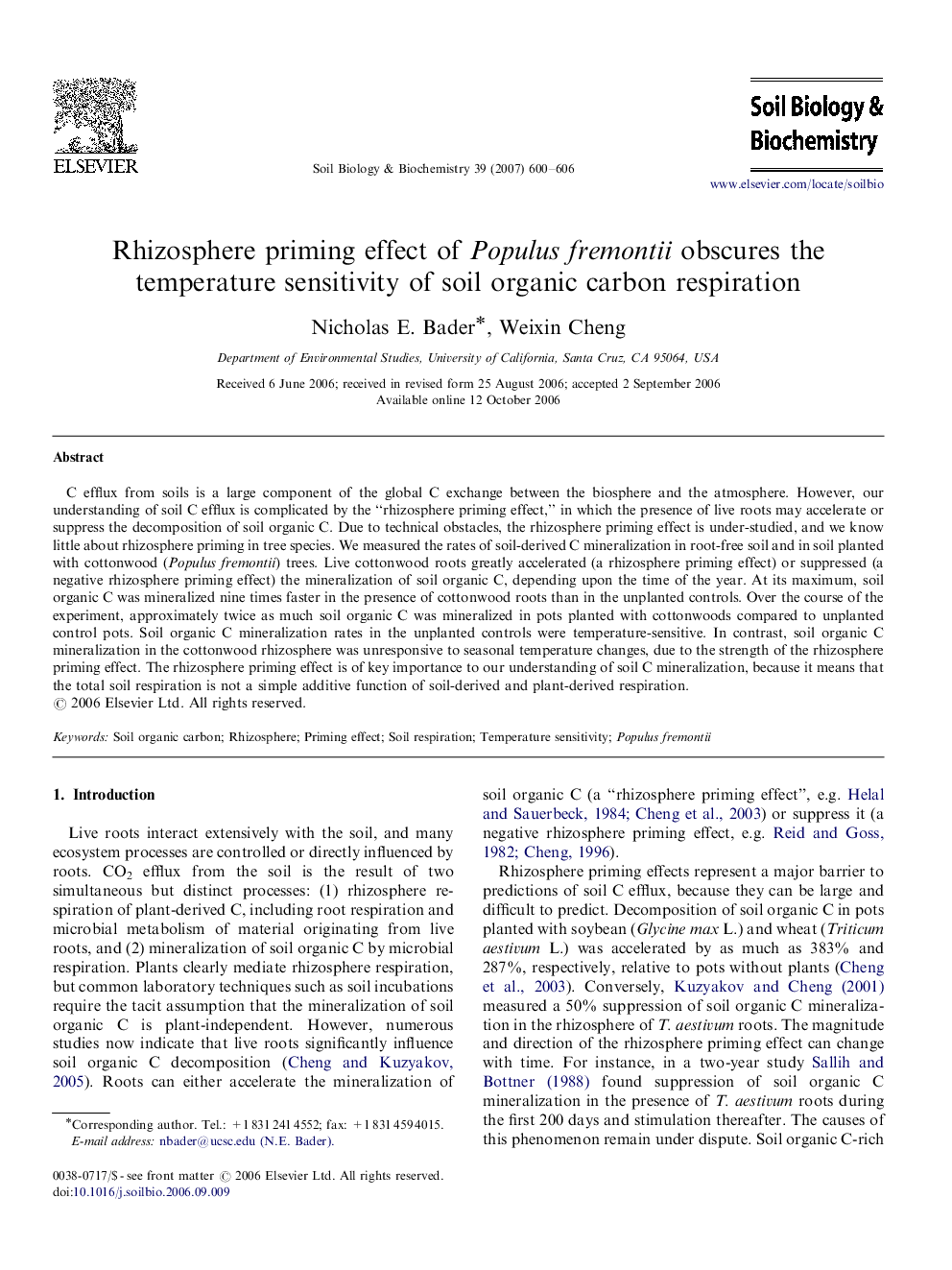| Article ID | Journal | Published Year | Pages | File Type |
|---|---|---|---|---|
| 2026480 | Soil Biology and Biochemistry | 2007 | 7 Pages |
C efflux from soils is a large component of the global C exchange between the biosphere and the atmosphere. However, our understanding of soil C efflux is complicated by the “rhizosphere priming effect,” in which the presence of live roots may accelerate or suppress the decomposition of soil organic C. Due to technical obstacles, the rhizosphere priming effect is under-studied, and we know little about rhizosphere priming in tree species. We measured the rates of soil-derived C mineralization in root-free soil and in soil planted with cottonwood (Populus fremontii) trees. Live cottonwood roots greatly accelerated (a rhizosphere priming effect) or suppressed (a negative rhizosphere priming effect) the mineralization of soil organic C, depending upon the time of the year. At its maximum, soil organic C was mineralized nine times faster in the presence of cottonwood roots than in the unplanted controls. Over the course of the experiment, approximately twice as much soil organic C was mineralized in pots planted with cottonwoods compared to unplanted control pots. Soil organic C mineralization rates in the unplanted controls were temperature-sensitive. In contrast, soil organic C mineralization in the cottonwood rhizosphere was unresponsive to seasonal temperature changes, due to the strength of the rhizosphere priming effect. The rhizosphere priming effect is of key importance to our understanding of soil C mineralization, because it means that the total soil respiration is not a simple additive function of soil-derived and plant-derived respiration.
